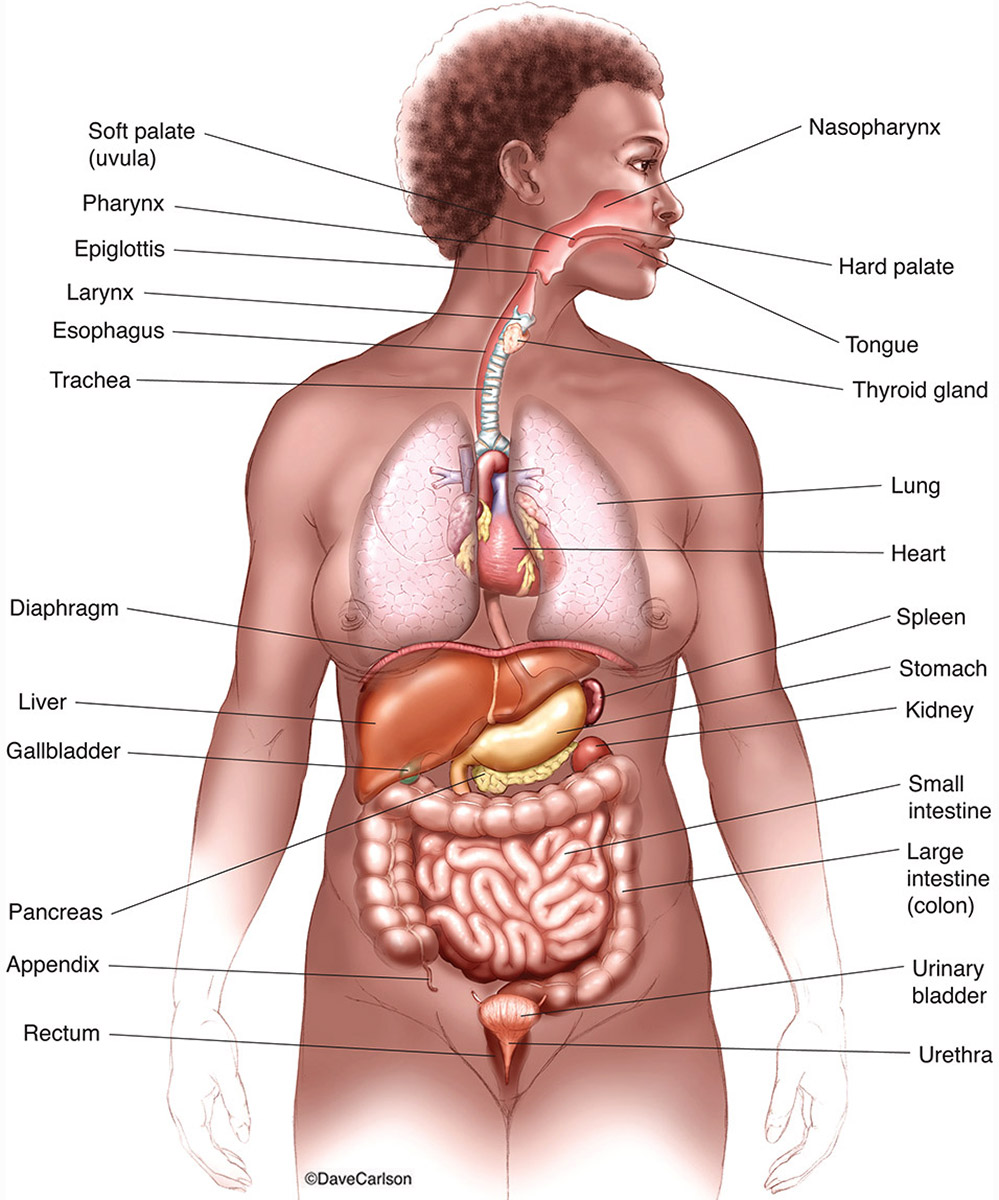Organs In The Body | Organs of the integumentary system include the skin, hair, and nails. Oxygen moves in when you inhale air. 674 x 599 photo description: List of organs of the body organs are the structures formed by a group of tissues. Altogether, there are 10 large organs in the body, which include skin, liver, brain, lungs, heart, kidney, spleen, pancreas, thyroid and joints.
Organs are structures made up of two or more tissues organized to carry out a particular function, and groups of organs with related functions make up the different organ systems. The next level of organization in the body is that of the organ. Losing total function of any one of these vital organs spells death. An organ system is a group of organs that work together to perform a complex function. Your kidneys help keep the salts and minerals in your blood in proper balance.

All organs of the body work in sync to form about a dozen organ systems. An organ is a collection of tissues that function in a particular manner. This video explains the internal organs of human body. There are eleven organ systems in the human body. The heart's normal right atrium occurs on the left, and the left atrium is on the right. See human body organs stock video clips. An organ system is a group of organs that work together to perform a complex function. A group of organs whose jobs are closely related are often referred to as a system. Examples of organ systems include the circulatory system and the. Among them, brain, heart, lungs, liver and kidneys are considered as the major or vital organs of the human body. The liver is the most important organ of the metabolic system. These disruptions can change mood and behavior, and make it harder to think clearly and move with coordination. The kidneys filter out wastes and extra fluids from your body into urine.
Examples of organ systems include the circulatory system and the. List of organs of the body organs are the structures formed by a group of tissues. A few of them are explained in detail below. Your body organs range from your brain, heart, liver, skin, lungs, kidneys, intestines, stomach, bladder, etc. Here is some information about the most important internal organs of the human body, beginning with the head, and continuing downward.

It is widely believed that there are 100 organs; Your body organs range from your brain, heart, liver, skin, lungs, kidneys, intestines, stomach, bladder, etc. Losing total function of any one of these vital organs spells death. The tissue is connected and constructed as a unit to serve a common function. The next level of organization in the body is that of the organ. A simple video to introduce the most important organs of the body in english and locate their positions in the body. Thus, the heart is an organ composed of all four tissues, whose function is to pump blood throughout the body. The human body contains major internal organs or body parts which can be easily identified. The human body organs of different types and can be grouped into sections like of digestion: See human body organs stock video clips. It helps convert nutrients into usable substances, detoxifies certain substances, and filters blood coming from the digestive tract. Suitable for esl and bilingual classroom. A few of them are explained in detail below.
In all, there are believed to be 80 organs in your body, all serving different functions and uses. In the pyramid of life that organizes all of the elements of life into categories, organ systems are nested between an organism and its organs. The human brain is the body's control center, receiving and sending signals to. Since there is no single standard definition of what an organ is, the number of organs varies depending on how one defines an organ. The tissue is connected and constructed as a unit to serve a common function.

This diagram of the human body shows a range of organs that are important to human anatomy.they include the brain, heart, lungs, spleen, muscles. A simple video to introduce the most important organs of the body in english and locate their positions in the body. Your kidneys help keep the salts and minerals in your blood in proper balance. The novel coronavirus is said to have a drastic impact on the respiratory system. They are all concerned with one important physiological function, namely digestion. However, there is no universally standard definition of what constitutes an organ, and some tissue groups' status as one is debated. Here is some information about the most important internal organs of the human body, beginning with the head, and continuing downward. Oxygen moves in when you inhale air. Among them, brain, heart, lungs, liver and kidneys are considered as the major or vital organs of the human body. Generally, the organs are simply transposed through the sagittal plane. Each organ has a specific role which contributes to the overall wellbeing of the human body. Organs are grouped together into organ systems. The skin is the body's first defense against pathogens, and it also helps regulate body temperature and eliminate wastes in sweat.
Organs In The Body: Find free pictures, photos, diagrams, images and information related to the human body right here at science kids.
0 comments